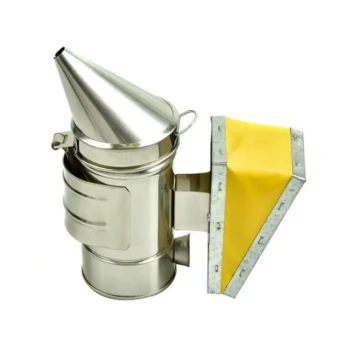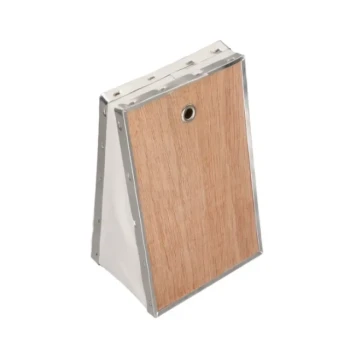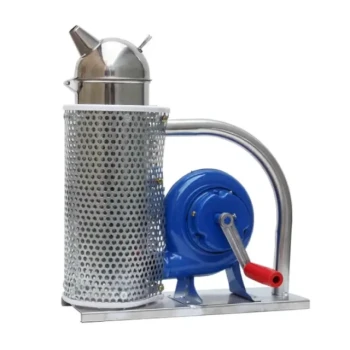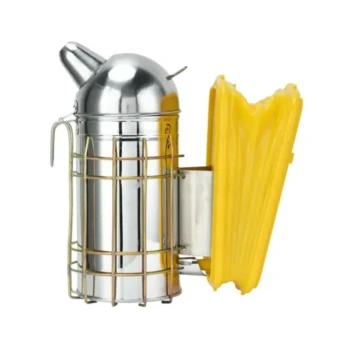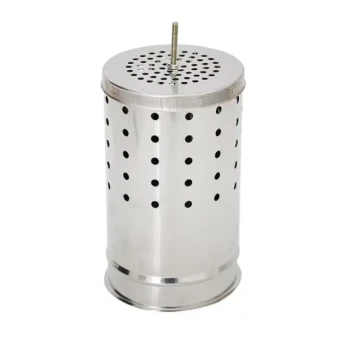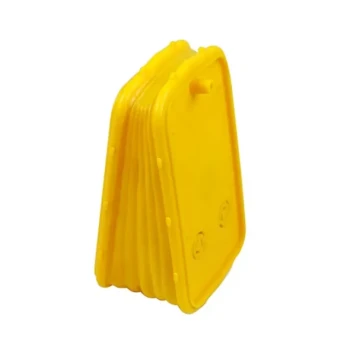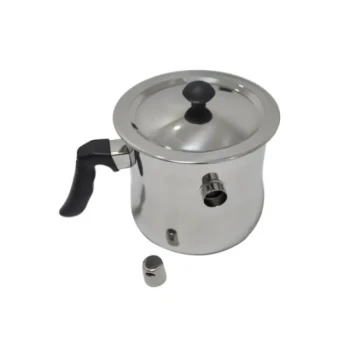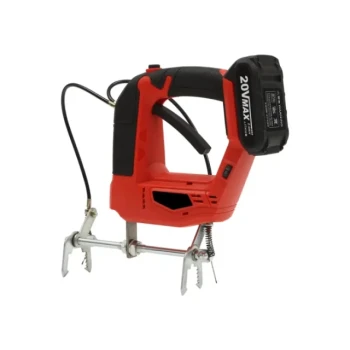The most important considerations for choosing a smoker fuel are safety, burn characteristics, and heat output. You must use only non-toxic, natural materials that can be combined to light easily and then smolder slowly, producing a steady stream of cool, white smoke for the entire duration of your hive inspection.
The key to effective smoker fuel is not finding a single perfect material, but creating a combination. The ideal setup pairs a fast-igniting starter with a slow-burning main fuel to produce the cool, consistent smoke that calms bees without harming them.
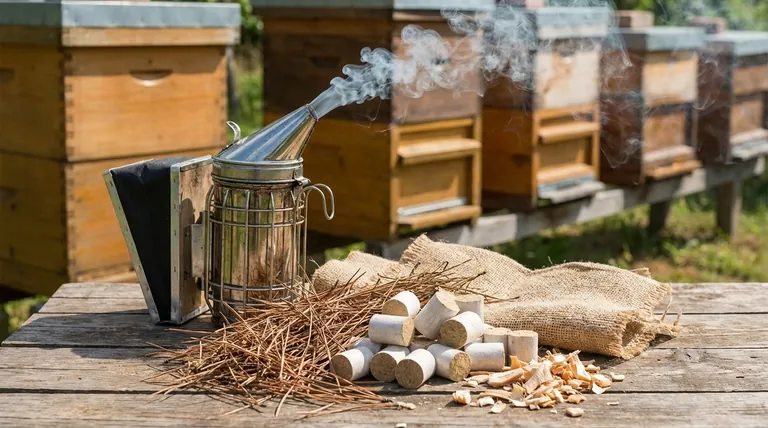
The Goal: Cool, White, and Consistent Smoke
Before choosing a fuel, it's critical to understand what you're trying to achieve. The quality of your smoke is more important than the specific material you use.
Why Cool Smoke Matters
Hot smoke, embers, or flames exiting the smoker will not calm your bees; it will make them defensive and aggressive. Your primary goal is to produce a cool, thick, white smoke that gently pacifies the colony.
The Purpose of the Smoke
The smoke works by masking the alarm pheromones, such as isopentyl acetate, that guard bees release when they perceive a threat. This interruption in communication prevents a colony-wide defense response, allowing you to work more safely.
Building Your Fuel Combination: The Two-Part Recipe
A successful smoker session almost always relies on layering two different types of fuel.
Step 1: The Starter (Fast-Igniting Fuel)
Your starter fuel must catch a flame easily and quickly. Its only job is to create a hot coal base to ignite your main fuel.
Good examples include dry pine needles, corrugated cardboard (without glossy ink), dry leaves, or baler twine.
Step 2: The Main Fuel (Slow-Burning Fuel)
Once the starter is lit, you add your main fuel. This material should be denser and capable of smoldering for a long time without producing excessive heat or flame.
Excellent choices are wood shavings, untreated burlap, "punk" or rotten wood, cotton rags, sumac bobs, or dried corn cobs.
Understanding the Trade-offs and Pitfalls
Selecting the wrong fuel or using it incorrectly can turn a routine inspection into a difficult one. Awareness of the potential downsides is key to success.
The Risk of Burning Too Hot
Some materials, like burlap, are excellent slow-burning fuels but can become very hot if the smoker is puffed too aggressively. Always monitor the heat of your smoker's nozzle to avoid sending scorching air into the hive.
The Problem of Inadequate Fuel
Running out of smoke mid-inspection is a common and frustrating mistake. Always pack your smoker with more fuel than you think you will need. A smoker that goes out requires you to stop, step away from the hive, and restart the entire process.
The Critical Importance of Toxin-Free Materials
This cannot be overstated. Never burn synthetic materials like polyester or plastic, as they release toxic fumes harmful to both you and your bees.
Avoid pressure-treated wood, wood with paint or varnish, and glossy paper inserts from magazines. Be aware of local toxic plants, such as the Brazilian Pepper tree, which should never be used.
Making the Right Choice for Your Inspection
Your fuel choice depends on your goals and available resources. Use these principles to guide your decision.
- If your primary focus is a quick, 5-minute inspection: A simple combination of dry pine needles and a handful of wood shavings is perfectly sufficient.
- If your primary focus is a longer, more involved hive manipulation: Pack your smoker tightly with a dense, long-burning fuel like punk wood or cotton denim on top of your starter.
- If your primary focus is using what's locally available: Prioritize safety above all, ensuring materials are natural and non-toxic before testing how well they light and smolder.
Ultimately, the best fuel is one that is safe, effective, and readily available for your needs.
Summary Table:
| Fuel Component | Purpose | Examples |
|---|---|---|
| Starter Fuel | Ignites quickly to create a hot coal base. | Dry pine needles, corrugated cardboard, dry leaves. |
| Main Fuel | Smolders slowly for long-lasting, cool smoke. | Wood shavings, untreated burlap, punk wood, cotton rags. |
| Materials to AVOID | Prevent harm to bees and beekeeper. | Plastics, treated/painted wood, glossy paper, toxic plants. |
Ensure every hive inspection is safe and efficient with the right supplies. HONESTBEE supplies commercial apiaries and beekeeping equipment distributors with high-quality, wholesale smoker fuel and beekeeping equipment. Let us help you stock the reliable, non-toxic materials your operation depends on.
Contact our wholesale team today to discuss your needs!
Visual Guide
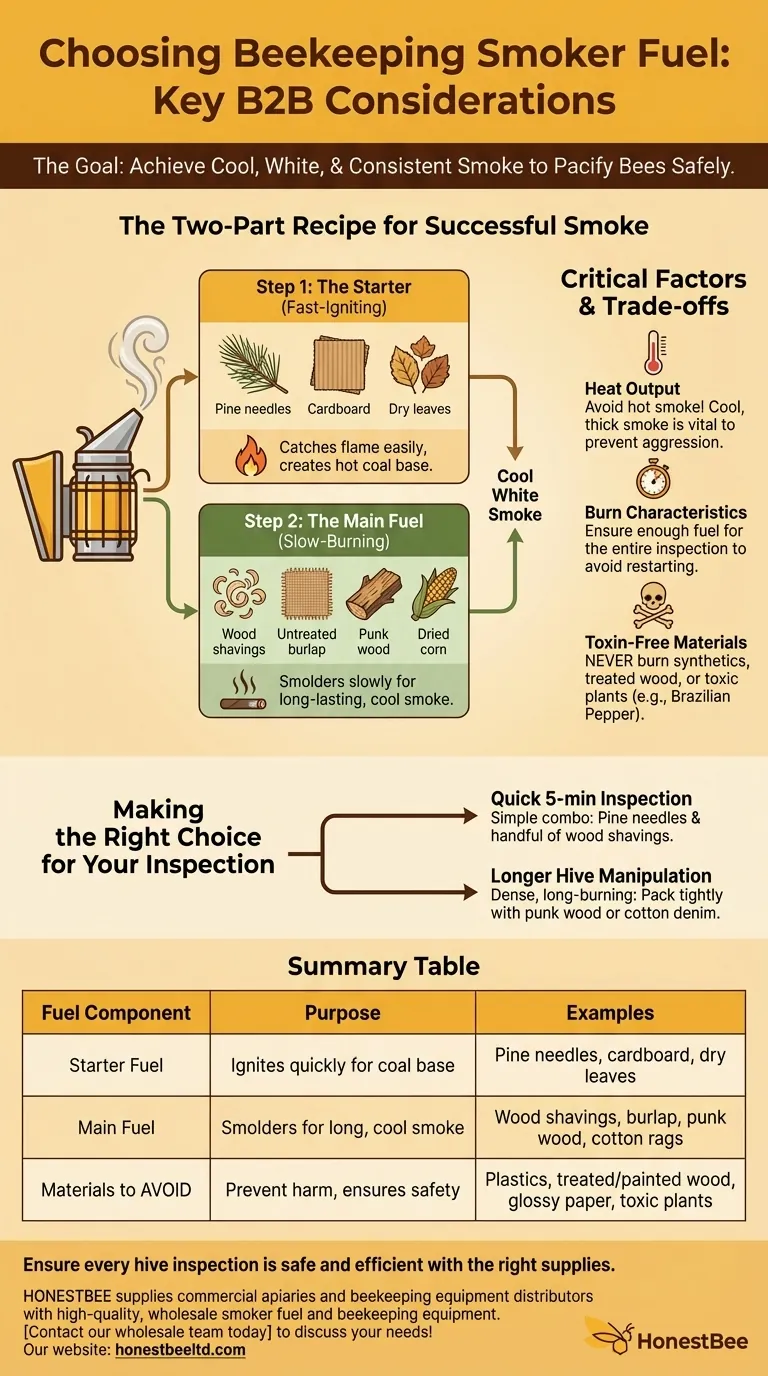
Related Products
- 54-Piece Smoker Fuel Pellets for Beekeeping Beehive Smoker Fuel
- Premium Traditional Copper Bee Smoker with Bellows
- Economy Galvanized Beekeeping Honey Bee Smoker for Wholesale
- Stainless Steel Honey Bee Smoker Hive and Honeycomb Smoker for Beekeeping
- European Stainless Steel Bee Smoker for Honey Bee Hive
People Also Ask
- What is the best bee hive smoker fuel? Choose Natural, Slow-Burning Fuel for Calm Bees
- How should you start the fire in a bee smoker? A Step-by-Step Guide for a Calm Hive
- What is used in a bee smoker? Master the Best Fuels for Calm, Healthy Hives
- What to put in a bee hive smoker? A Guide to Natural, Calming Fuels
- What fuels are recommended for beehive smokers? Master the Art of Calm, Controlled Inspections






